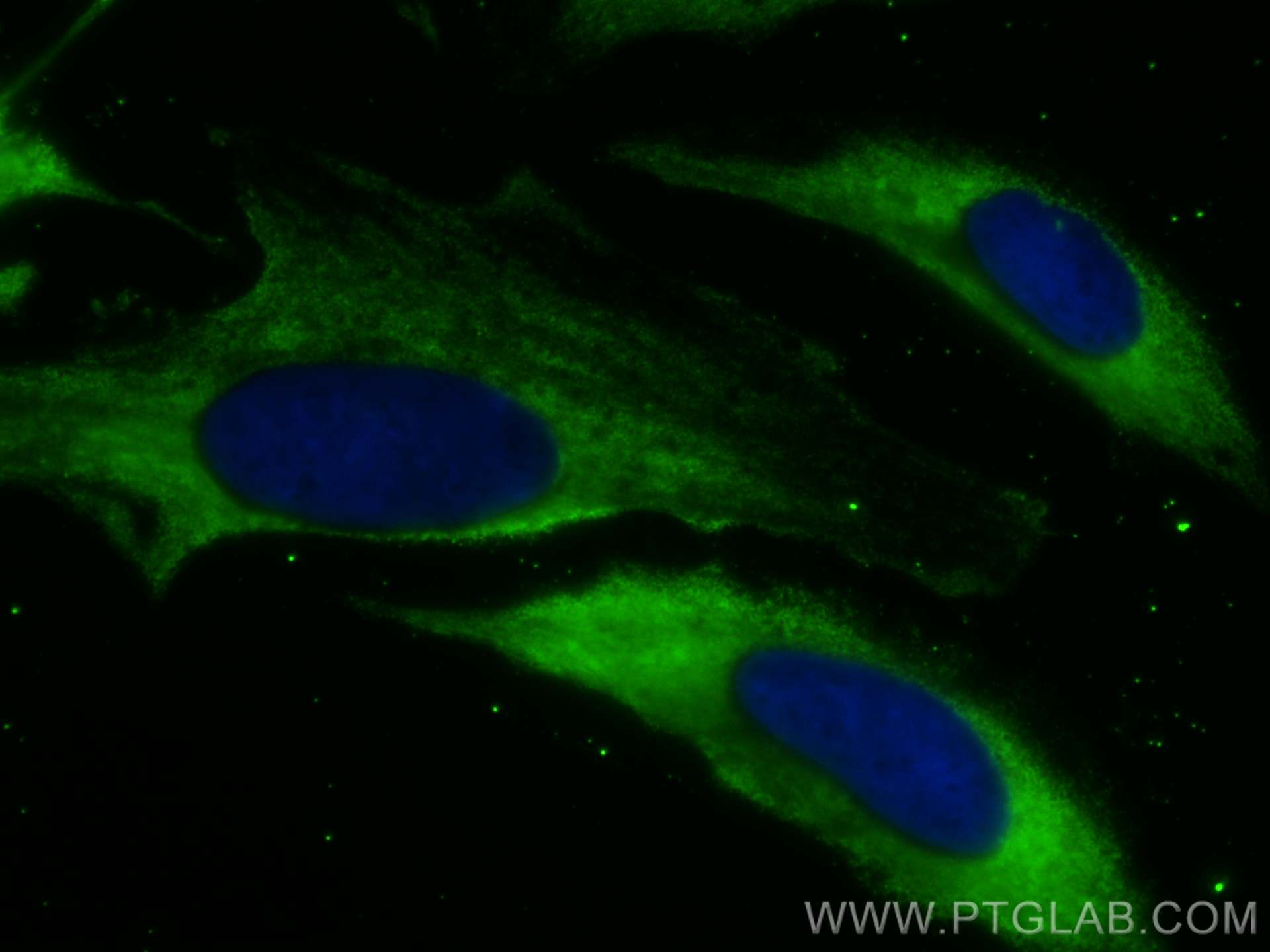Validation Data Gallery
Filter:
Tested Applications
| Positive IF/ICC detected in | HeLa cells |
Recommended dilution
| Application | Dilution |
|---|---|
| Immunofluorescence (IF)/ICC | IF/ICC : 1:50-1:500 |
| It is recommended that this reagent should be titrated in each testing system to obtain optimal results. | |
| Sample-dependent, Check data in validation data gallery. | |
Product Information
CL488-68285 targets RABEP1 in IF/ICC applications and shows reactivity with Human, Mouse, Rat, Rabbit, Pig samples.
| Tested Reactivity | Human, Mouse, Rat, Rabbit, Pig |
| Host / Isotype | Mouse / IgG1 |
| Class | Monoclonal |
| Type | Antibody |
| Immunogen | RABEP1 fusion protein Ag6023 相同性解析による交差性が予測される生物種 |
| Full Name | rabaptin, RAB GTPase binding effector protein 1 |
| Calculated molecular weight | 99 kDa |
| Observed molecular weight | 100-105 kDa |
| GenBank accession number | BC041700 |
| Gene Symbol | RABEP1 |
| Gene ID (NCBI) | 9135 |
| RRID | AB_3084466 |
| Conjugate | CoraLite® Plus 488 Fluorescent Dye |
| Excitation/Emission maxima wavelengths | 493 nm / 522 nm |
| Form | Liquid |
| Purification Method | Protein G purification |
| UNIPROT ID | Q15276 |
| Storage Buffer | PBS with 50% glycerol, 0.05% Proclin300, 0.5% BSA , pH 7.3 |
| Storage Conditions | Store at -20°C. Avoid exposure to light. Stable for one year after shipment. Aliquoting is unnecessary for -20oC storage. |
Background Information
Rab GTPase-binding effector protein 1 is an enzyme that in humans is encoded by the RABEP1 gene. It belongs to rabaptin protein family. RABEP1 act as linker between gamma-adaptin, RAB4A and RAB5A. It is involved in endocytic membrane fusion and membrane trafficking of recycling endosomes. (PMID: 22841712)
Protocols
| Product Specific Protocols | |
|---|---|
| IF protocol for CL Plus 488 RABEP1 antibody CL488-68285 | Download protocol |
| Standard Protocols | |
|---|---|
| Click here to view our Standard Protocols |
